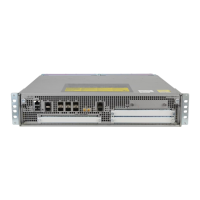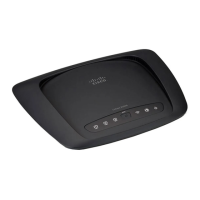1-6
Cisco IOS XR Getting Started Guide for the Cisco XR 12000 Series Router
OL-24755-01
Chapter 1 Introduction to Cisco IOS XR Software
Cisco XR 12000 Series Router Overview
• Static Routing—Static routes are user-defined routes that cause packets moving between a source
and a destination to take a specified path. For more information on static routing, see Cisco IOS XR
Routing Configuration Guide for the Cisco XR 12000 Series Router.
• IPv4 Multicast—IPv4 Multicast delivers source traffic to multiple receivers without adding any
additional burden on the source or the receivers while using the least network bandwidth of any
competing technology. For more information on IPv4 Multicast, see Cisco IOS XR Multicast
Configuration Guide for the Cisco XR 12000 Series Router.
• Routing Policy Language (RPL)—RPL provides a single, straightforward language in which all
routing policy needs can be expressed. For more information on RPL, see Cisco IOS XR Routing
Configuration Guide for the Cisco XR 12000 Series Router.
• Hot Standby Router Protocol (HSRP)—HSRP is an IP routing redundancy protocol designed to
allow for transparent failover at the first-hop IP router. For more information on HSRP, see Cisco
IOS XR IP Addresses and Services Configuration Guide for the Cisco XR 12000 Series Router.
• Virtual Router Redundancy Protocol (VRRP)—VRRP allows for transparent failover at the first-hop
IP router, enabling a group of routers to form a single virtual router. For more information on VRRP,
see Cisco IOS XR IP Addresses and Services Configuration Guide for the Cisco XR 12000 Series
Router.
• Border Gateway Protocol (BGP) Add Path— This feature enables a BGP speaker to send multiple
paths for a prefix. For more information on BGP Add Path, see Cisco IOS XR Routing Configuration
Guide for the Cisco XR 12000 Series Router.
• Selective VRF Download (SVD)—This feature allows the download of only those prefixes and
labels to a line card that are actively required to forward traffic through that line card. For more
information on SVD, see the Cisco IOS XR Routing Configuration Guide for the Cisco XR 12000
Series Router.
MPLS VPN
The router supports MPLS VPN, which offers the following:
• MPLS L3VPN—This IP VPN feature for MPLS allows a Cisco IOS Software or
Cisco IOS XR software network to deploy scalable IPv4 Layer 3 VPN backbone services. An IP
VPN is the foundation that companies use for deploying or administering value-added services,
including applications and data hosting network commerce and telephony services, to business
customers.
• Carrier Supporting Carrier (CSC)—CSC allows an MPLS VPN service provider to connect
geographically isolated sites using another backbone service provider and still maintain a private
address space for its customer VPNs. It is implemented as defined by IETF RFC 4364.
• Inter-AS—is a peer-to-peer type model that allows extension of VPNs through multiple provider or
multi-domain networks. This lets service providers peer up with one another to offer end-to-end
VPN connectivity over extended geographical locations. An MPLS VPN Inter-AS allows:
–
VPN to cross more than one service provider backbone.
–
VPN to exist in different areas.
–
Confederations to optimize Internal Border Gateway Protocol (iBGP) meshing.
QoS
The router supports many types of quality of service (QoS), which offers the following:

